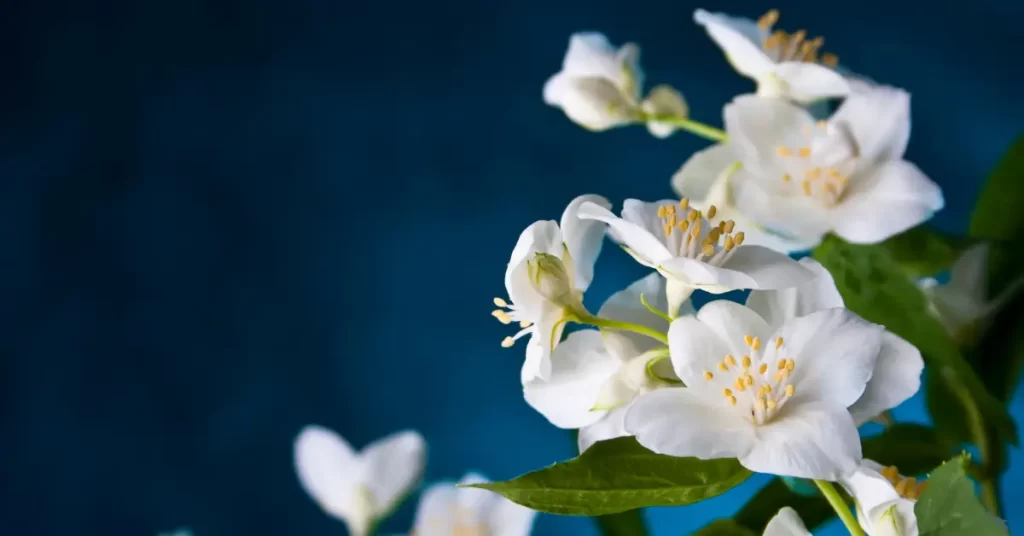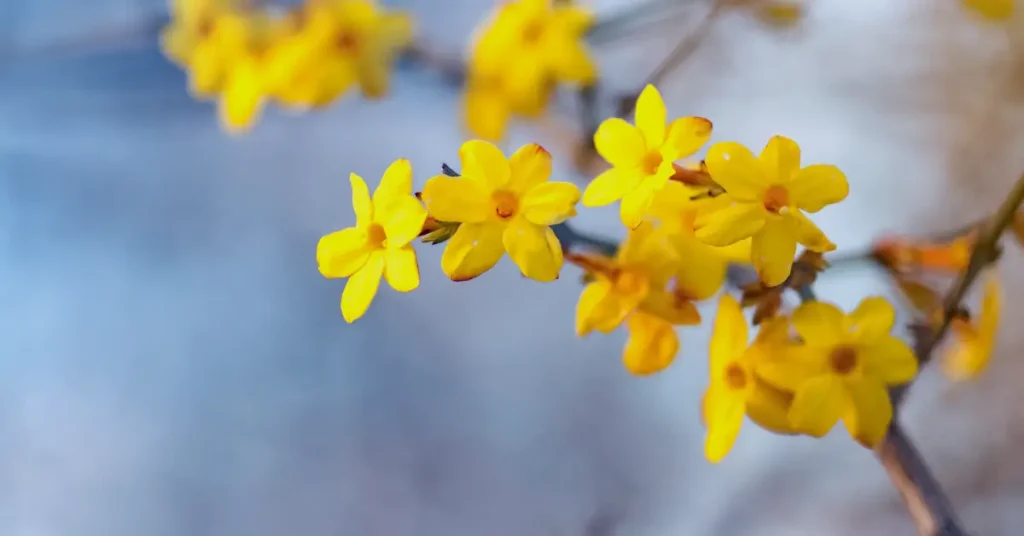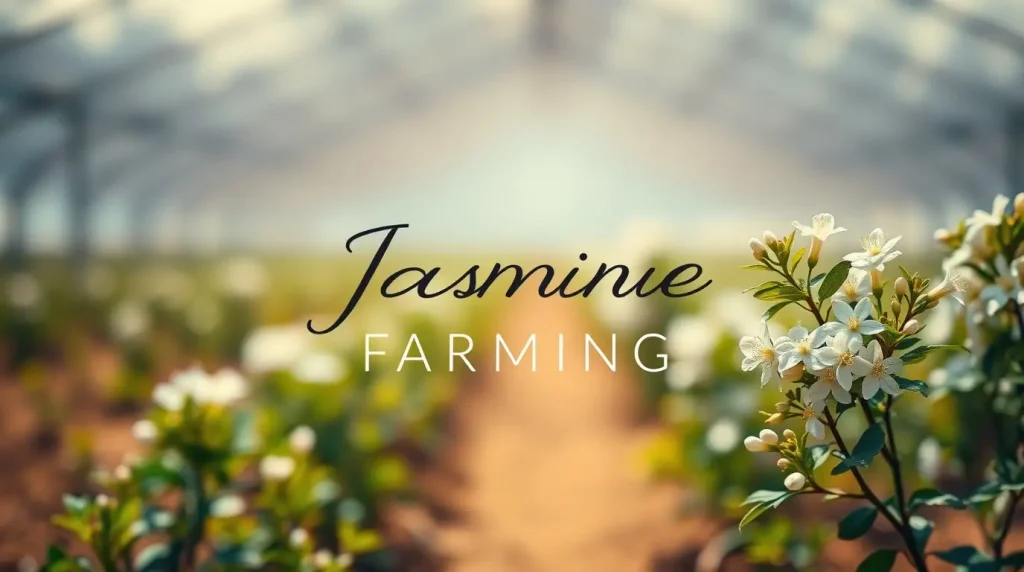Gardenia Jasminoides: Cape Jasmine
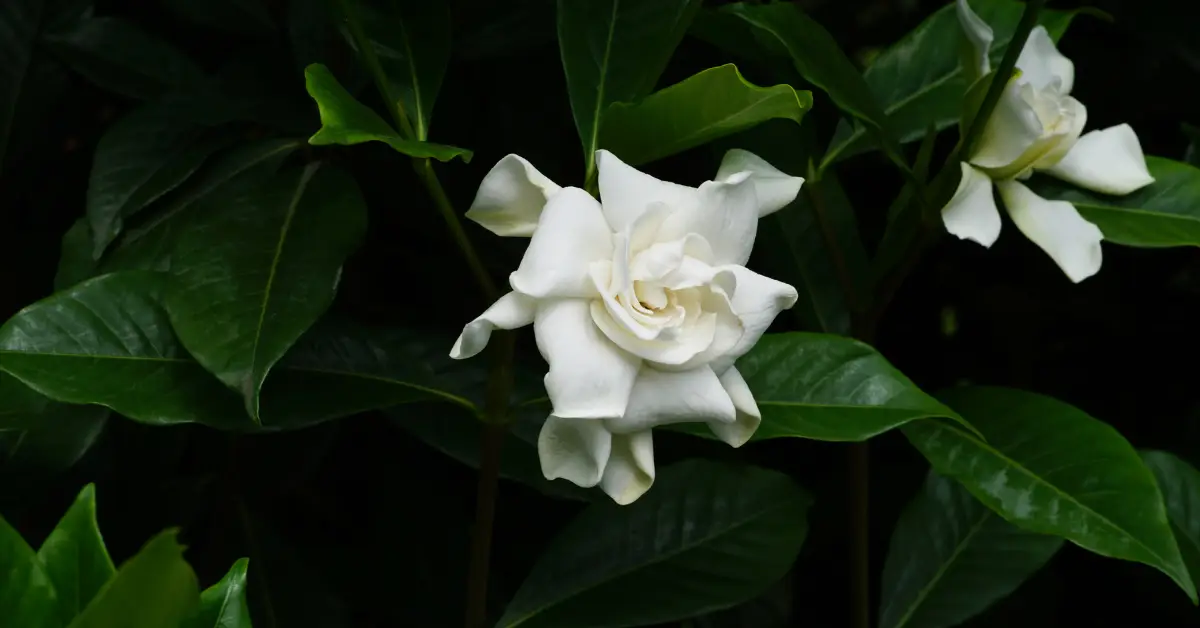
Gardenia jasminoides (cape jasmine) locally known as Ganjhraj in India, is an evergreen flowering plant and native to South East Asia. It belongs to the coffee family Rubiaceae. The plant’s height ranges from 1 feet to 10 feet. Plants have dense branches and opposite patterns of shiny dark leaves in pairs. Flowers are extremely fragrant. Gardenia blooms throughout the year in warm climates where temperatures remain consistent above 15° C and in cooler regions bloom late spring to early summer.
In this article, get ready to learn gardenia jasminoides characteristics, history, basics requirement, uses, indoor and outdoor growing and care, insect pests and their management.
Gardenia Jasminoides Characteristics
| Characteristic | Description |
|---|---|
| Scientific Name | Gardenia jasminoides |
| Common Name(s) | Cape jasmine, Gardenia, Cape jessamine |
| Family | Rubiaceae |
| Native Range | China, Taiwan, Japan, Vietnam |
| Growth Habit | Evergreen shrub or small tree |
| Height | Typically 1 to 10 feet (up to 3 meters) |
| Flowering Season | Late spring to summer |
| Flower Color | White, sometimes creamy or yellowish |
| Fragrance | Strong, sweet fragrance |
| Leaf Type | Glossy, dark green, oval-shaped |
| Sunlight Exposure | Partial to full sun (Bright) |
| Soil Type | Well-drained, acidic soil |
| Watering Needs | Regular watering, keep soil consistently moist |
| Hardiness Zones | USDA zones 7 to 11 |
| Uses | Ornamental, cut flowers, fragrant gardens, perfumes |
Gardenia Jasminoides
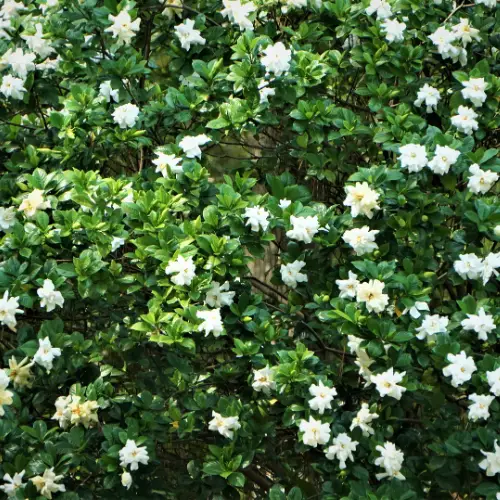
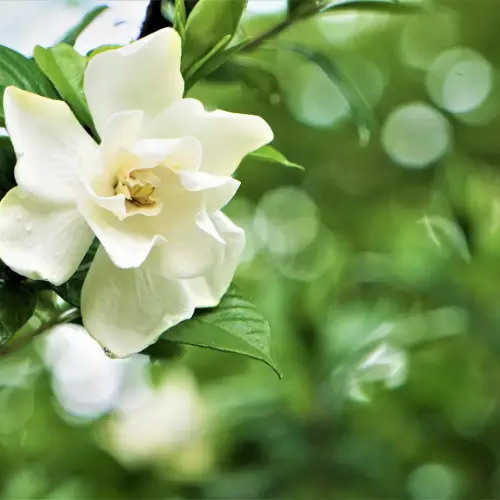
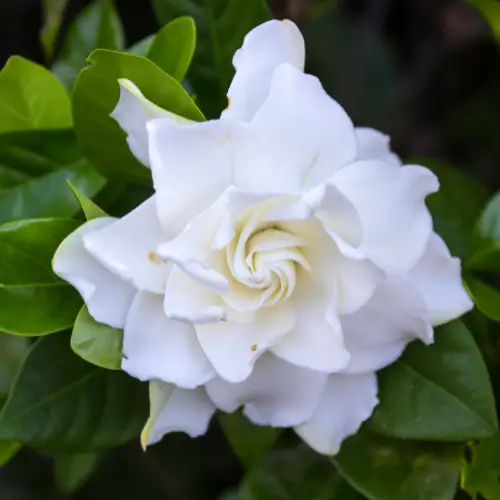
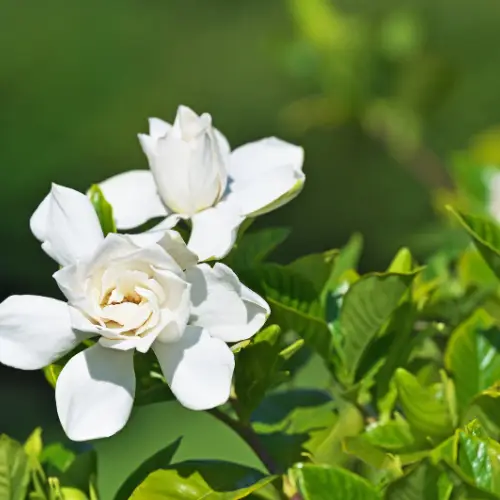
Gardenia Plant
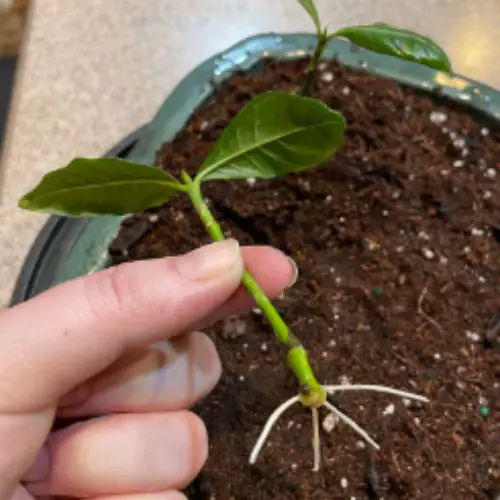
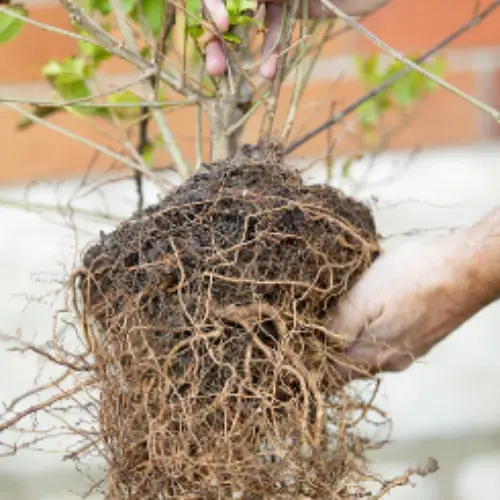
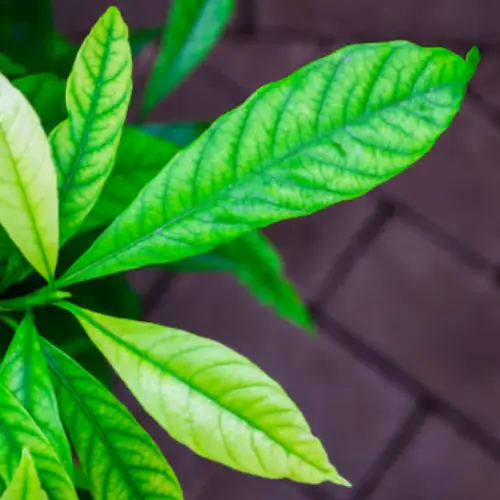
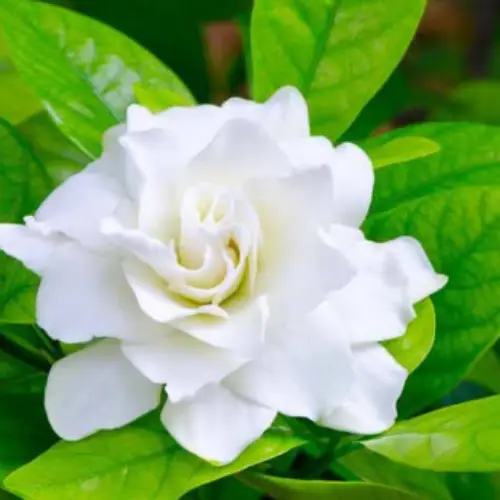
History
The cape Jasmine cultivation dates back from 960–1279 AD in China. Transferring from song Dynasty, Yuan Dynasty, Ming Dynasty, it came into Europe in 1652. It was used to treat Jaundice, Fevers and Odema.
Captain William Hutchenson brought species to the United Kingdom in 1744 via the British East India Ship and then successfully propagated by the Gardener James Gordon.
In the United States, Gardenias were grown in 1762.
Now, Many varieties have been developed; among them,double-flowered are most popular.
Basics Requirement For Growing

4-6 hours.

Well drained Acidic Soil.

Ph 5.0-6.5

71-77°F (21-24°C) at Day and 59-64°F (15-18°C) at night.

An inch per week. Maintain consistent moisture but avoid over-watering.
Uses of jasminoides
Gardenia jasminoides have been used for many years as a medicinal plant. Dried fruits from this plant have a long history of use in traditional herbal medicine. They were traditionally uesd to treat disorders such as jaundice, urinary issues, restlessness, excess heat in the blood, such as vomiting blood, painless swelling of the eyes, and firetoxin ulcers. In regions of South China, this herb serves as a vital raw material especially into herbal teas and local beverages.
Furthermore, scientific research has revealed its diverse benefits, including kidney protection, blood pressure regulation, gastric health promotion, neuroprotection, memory enhancement, improvement in insulin sensitivity, and its potential as an anti-diabetic, antidepressant, and anti-inflammatory agent. (Buchweitz, 2016; Chen et al., 2020; Cho, 2022; Liu et al., 2022; Neri-Numa, et al., 2020; Xu et al., 2022; Tian, et al., 2022; Yin & Liu, 2018). source: Neurobiology of Chinese Herb Medicine
Indoor and Outdoor Growing and Care
Grdenias favor warm days and cooler nights. They are grown indoor round the year, however they can be grown outdoor.
Propagation
There are two (02) ways of growing gardenias.
- Through seeds
- Through cuttings
Through Seeds
It is time taking method and requires patience and efforts. Here’s a step-by-step guide on how to propagate Gardenia jasminoides from seeds:
- Collect the Seeds: First, collect the seeds and clean them. Place in sunny area for 3 to 4 weeks to dry them completely.
- Planting Medium: Use a well-draining, sterile potting mix for germination. A mix of peat moss, perlite, and vermiculite or a specialized seed-starting mix works well. Fill small pots or trays with the germination medium. It takes about 4 to 6 weeks for sprouting.
- Transplanting in Pots: Once the seedlings have developed in several inches and are easy to handle, transplant them into individual pots filled with a well-draining potting mix. Provide adequate sunlight and water regularly to promote healthy growth.
- Transplanting Outdoor: Once reached at a certain height and stable in pots, you can shift them outdoor in your garden.
Through Cuttings
This one is the gardener’s favorite method and requires less efforts than previous method. Here’s a step-by-step guide:
- Gather Essentials: Pot (3 inch), Garden shears, rooting hormone, plastic bag and potting soil.
- Selecting Cuttings: Choose healthy, non-flowering shoots from a mature Gardenia plant. Cuttings should be around 3 to 6 inches long and have at least two sets of leaves.
- Prepare Pot: Prepare the pot with mois soil.
- Rooting Hormone: Dip the bottom end of each cutting in a rooting hormone powder or gel. This helps stimulate root growth and improves the chances of successful propagation.
- Planting Cuttings: Insert the treated end of each cutting into a well-draining rooting medium in a pot.
- Provide Optimal Conditions: Place the planted cuttings in a warm, humid environment with indirect sunlight. Cover the cuttings with a plastic bag or place them in a propagator to maintain high humidity levels.
- Watering: Keep the rooting medium consistently moist but not waterlogged.
- Outdoor Planting: After the Gardenia plants have grown larger and stronger, you can transplant them outdoors into a suitable location with well-draining soil and partial shade.
Gardenia Jasminoides Indoor and Outdoor Care
- Check the basic requirements. USDA zones 7 to 11. Warm days and cooler nights. Acidic soil and ph 5-6.5
- Use a well-draining, acidic potting mix.
- Plant gardenias in a location with full sun to partial shade (Morning sun and afternoon shade).
- Gardenias prefer warm temperatures during the day (71°F to 75°F or 21°C to 24°C) and slightly cooler temperatures at night. Protect them from frost during the winter months.
- Water outdoor gardenias deeply once in a week. Aim to keep the soil consistently moist but not waterlogged.
- Apply a layer of organic mulch, such as pine bark or compost, around the base of the plant to help retain soil moisture and suppress weeds.
- During the growing season, feed your plants every 3 to 4 weeks. Opt for an acid fertilizer, fish emulsion, blood meal, or coffee grounds.
Gardenias Insect Pests and Management
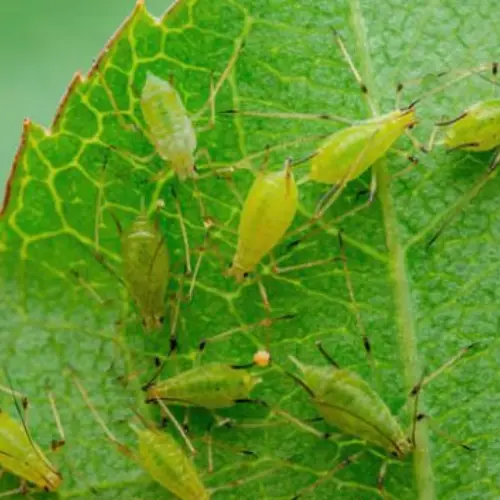
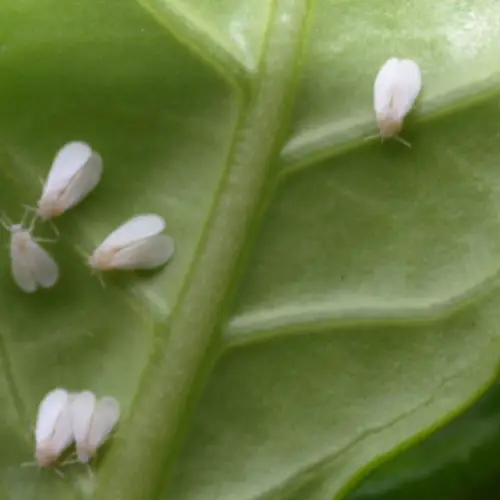
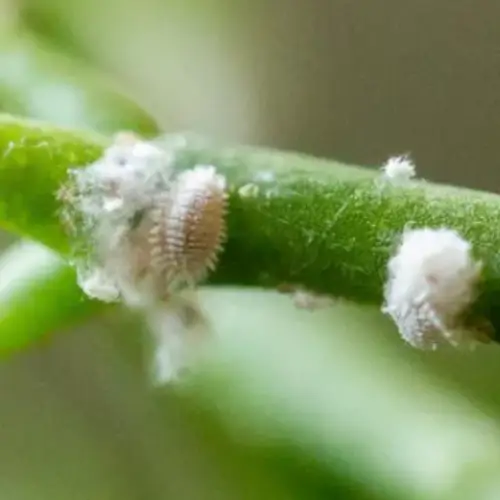
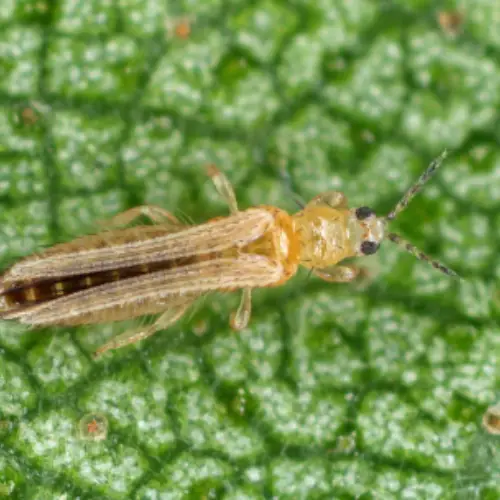
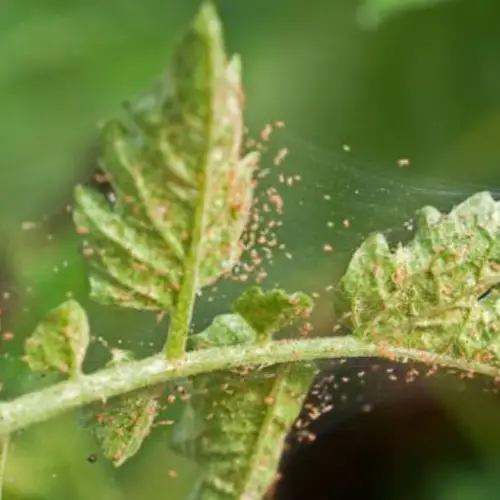
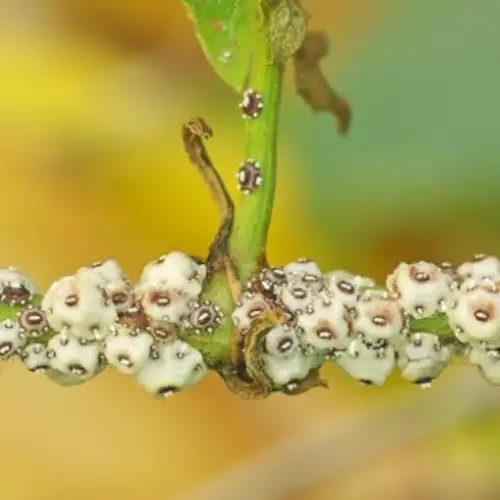
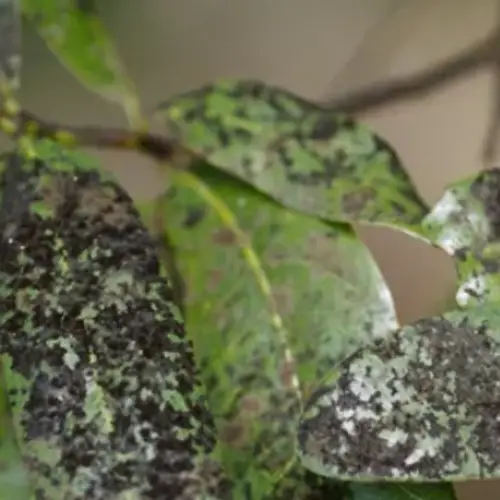

| Insect Name/Disease | Mode of Damage | Natural Control | Chemical Control |
|---|---|---|---|
| Aphids (Aphis gossypii. & Myzus persicae) | These are small (about 1/8 inch long) sucking pests that cause leaf curling, yellowing, and stunted growth. | Ladybugs, lacewings, parasitic wasps. | Neem oil, insecticidal soaps, pyrethroids. Repeat spray at 5- 7 days intervals. |
| Whiteflies (Dialeurodes citri) | With a powdery white appearance, They are very small – about 1/10 to 1/16 inch long. Suck sap from leaves, causing wilting, yellowing, and premature leaf drop. | Encarsia formosa (parasitic wasp), green lacewings, ladybugs. | Neonicotinoids, pyrethroids, insecticidal soaps. Repeat spray at 5- 7 days intervals. |
| Mealybugs (Pseudococcidae spp.) | Suck sap and secrete honeydew, leading to leaf yellowing, stunted growth, and mold development. | Predatory beetles, parasitic wasps, lacewings. | Horticultural oils, neem oil, systemic insecticides. Repeat spray at 5- 7 days intervals. |
| Scale Insects (Ceroplastes japonicus, Icerya purchase, Fiorinia these and Aspidiotus nerii | Suck sap from stems and leaves, causing yellowing, wilting, and stunted growth. | Parasitic wasps (e.g., Encarsia spp., Metaphycus spp.), predatory beetles. | Systemic insecticides (imidacloprid, acetamiprid), horticultural oils, neem oil. Repeat after 10 days. |
| Spider Mites (Tetranychus urticae) | Spider mites are extremely small (about 1/50-inch long). Suck sap from leaves, causing stippling, webbing, and leaf discoloration. | Predatory mites (e.g., Phytoseiulus persimilis), ladybugs, lacewings. | Acaricides (miticides), horticultural oils, insecticidal soaps. |
| Thrips (Frankliniella tritici & F. occidentalis) | Thrips (less than 1/16 inch in length) are slender, dark-colored insects with fringed wings. Feed on plant tissues, causing silvering, stippling, and distorted growth. | Predatory mites (e.g., Amblyseius cucumeris), minute pirate bugs, lacewings. | Insecticidal soaps, neonicotinoids, pyrethroids. Repeat spray at 7- 10 days intervals. |
| Sooty Mold | Black fungal growth on leaves, stems, and other surfaces, caused by honeydew secretion from sucking pests. | Encourage natural predators. Use Horticultural oils, insecticidal soaps. | Systemic insecticides to control honeydew-producing pests (Whitefly). |
| Root Rot | Encourage natural predators. Use Horticultural oils, and insecticidal soaps. | Proper drainage, soil drench with beneficial fungi. | Fungicides (e.g., thiophanate-methyl). |
| Powdery Mildew | White powdery patches on leaves, causing leaf distortion and reduced vigor. | Proper air circulation, sulfur-based fungicides, neem oil. | Fungicides (e.g., azoxystrobin, myclobutanil), sulfur-based products. |
Conclusion
This evergreen shrub has found its way into gardens and landscapes worldwide, cherished for its glossy dark green foliage and beautiful white blossoms. You can grow indoors and outdoors considering the basic requirements and care guide lines mentioned above. Being an Agronomist, I do recommend to opt propagation through cuttings and prefer to use natural ways for the treatment of insect pests. However, in case of severe injury use the chemical control to save your plants.

I am Yasir Riaz, an Agronomist for more than a decade. Helping local farmers and Gardeners to improve their crops and Gardens and overall productivity. In addition to my work in agriculture, I have also delved into the digital world as an SEO writer and blogger. Through my blog, I aim to educate and inspire others about the Chameli Flower (Jasmine).

